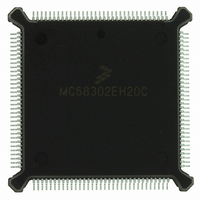MC68302EH20C Freescale Semiconductor, MC68302EH20C Datasheet - Page 134

MC68302EH20C
Manufacturer Part Number
MC68302EH20C
Description
IC MPU MULTI-PROTOCOL 132-PQFP
Manufacturer
Freescale Semiconductor
Datasheets
1.MC68302AG20C.pdf
(4 pages)
2.MC68302AG20C.pdf
(2 pages)
3.MC68302AG20C.pdf
(13 pages)
4.MC68302EH20C.pdf
(481 pages)
Specifications of MC68302EH20C
Processor Type
M683xx 32-Bit
Speed
20MHz
Voltage
5V
Mounting Type
Surface Mount
Package / Case
132-MQFP, 132-PQFP
Family Name
M68000
Device Core
ColdFire
Device Core Size
32b
Frequency (max)
20MHz
Instruction Set Architecture
RISC
Supply Voltage 1 (typ)
5V
Operating Temp Range
0C to 70C
Operating Temperature Classification
Commercial
Mounting
Surface Mount
Pin Count
132
Package Type
PQFP
Lead Free Status / RoHS Status
Lead free / RoHS Compliant
Features
-
Lead Free Status / Rohs Status
Compliant
Available stocks
Company
Part Number
Manufacturer
Quantity
Price
Company:
Part Number:
MC68302EH20C
Manufacturer:
Freescale Semiconductor
Quantity:
10 000
Part Number:
MC68302EH20C
Manufacturer:
FREESCALE
Quantity:
20 000
Company:
Part Number:
MC68302EH20CB1
Manufacturer:
Freescale Semiconductor
Quantity:
10 000
Company:
Part Number:
MC68302EH20CR2
Manufacturer:
Freescale Semiconductor
Quantity:
10 000
- MC68302AG20C PDF datasheet
- MC68302AG20C PDF datasheet #2
- MC68302AG20C PDF datasheet #3
- MC68302EH20C PDF datasheet #4
- Current page: 134 of 481
- Download datasheet (2Mb)
Communications Processor (CP)
The IDL interface supports the CCITT I.460 recommendation for data rate adaptation. The
IDL interface can access each bit of the B channel as an 8-kbps channel. A serial interface
mask register (SIMASK) for the B channels specifies which bits are supported by the IDL
interface. The receiver will support only the bits enabled by SIMASK. The transmitter will
transmit only the bits enabled by the mask register and will three-state L1TXD otherwise.
Refer to Figure 4-6 for an example of supporting two bits in the B1 channel and three bits in
the B2 channel.
4.4.2 GCI Interface
The normal mode of the GCI (also known as ISDN-Oriented Modular rev 2.2 (IOM2)) ISDN
bus is fully supported by the IMP. The IMP also supports channel 0 of the Special Circuit
Interface T (SCIT) interface, and in channel 2 of SCIT, supports the D channel access con-
trol for S/T interface terminals, using the command/indication (C/I) field. The IMP does not
support the Telecom IC (TIC) bus.
The GCI bus consists of four lines: two data lines, a clock, and a frame synchronization line.
Usually an 8-kHz frame structure defines the various channels within the 256-kbps data rate
as indicated in Figure 4-8. However, the interface can also be used in a multiplexed frame
structure on which up to eight physical layer devices multiplex their GCI channels. L1SY1
must provide the channel SYNC. In this mode, the data rate would be 2048 kbps.
The GCI clock rate is twice the data rate. The clock rate for the IMP must not exceed the
ratio of 1:2.5 serial clock to parallel clock. Thus, for a 16.67-MHz system clock, the serial
clock rate must not exceed 6.67 MHz.
The IMP also supports another line for D-channel access control—the L1GR line. This signal
is not part of the GCI interface definition and may be used in proprietary interfaces.
4-14
When the L1GR line is not used, it should be pulled high. The
IMP has two data strobe lines (SDS1 and SDS2) for selecting ei-
ther or both of the B1 and B2 channels and the data rate clock
(L1CLK). These signals are used for interfacing devices that do
not support the GCI bus. They are configured with the SIMASK
register and are active only for bits that are not masked.
MC68302 USER’S MANUAL
NOTE
MOTOROLA
Related parts for MC68302EH20C
Image
Part Number
Description
Manufacturer
Datasheet
Request
R
Part Number:
Description:
Manufacturer:
Freescale Semiconductor, Inc
Datasheet:

Part Number:
Description:
MC68302 Configuring the Chip Selects on the MC68302
Manufacturer:
Motorola / Freescale Semiconductor

Part Number:
Description:
MC68302 Design Concept - Expanding Interrupts on the MC68302
Manufacturer:
Motorola / Freescale Semiconductor

Part Number:
Description:
MC68302 MC68302 Adapting a WAN Controller to a LAN Environment
Manufacturer:
Motorola / Freescale Semiconductor

Part Number:
Description:
MC68302 EKB Applications - Power Measurements on the MC68302
Manufacturer:
Motorola / Freescale Semiconductor

Part Number:
Description:
MC68302 Interfacing the MC68020 to a Slave MC68302
Manufacturer:
Motorola / Freescale Semiconductor

Part Number:
Description:
MC68302 MC68302 Software Performance
Manufacturer:
Motorola / Freescale Semiconductor

Part Number:
Description:
MC68302 Evaluating EDX on the ADS302
Manufacturer:
Motorola / Freescale Semiconductor

Part Number:
Description:
MC68302 Design Advisory #1 - MC68SC302 Passive ISDN Protocol Engine
Manufacturer:
Motorola / Freescale Semiconductor

Part Number:
Description:
MC68302, MC68360, and MPC860 Characteristics and Design Notes for Crystal Feedback Oscillators
Manufacturer:
Motorola / Freescale Semiconductor
Part Number:
Description:
Mc68302 Integrated Multi-protocol Processor
Manufacturer:
Freescale Semiconductor, Inc
Datasheet:
Part Number:
Description:
Manufacturer:
Freescale Semiconductor, Inc
Datasheet:
Part Number:
Description:
Manufacturer:
Freescale Semiconductor, Inc
Datasheet:
Part Number:
Description:
Manufacturer:
Freescale Semiconductor, Inc
Datasheet:
Part Number:
Description:
Manufacturer:
Freescale Semiconductor, Inc
Datasheet:











